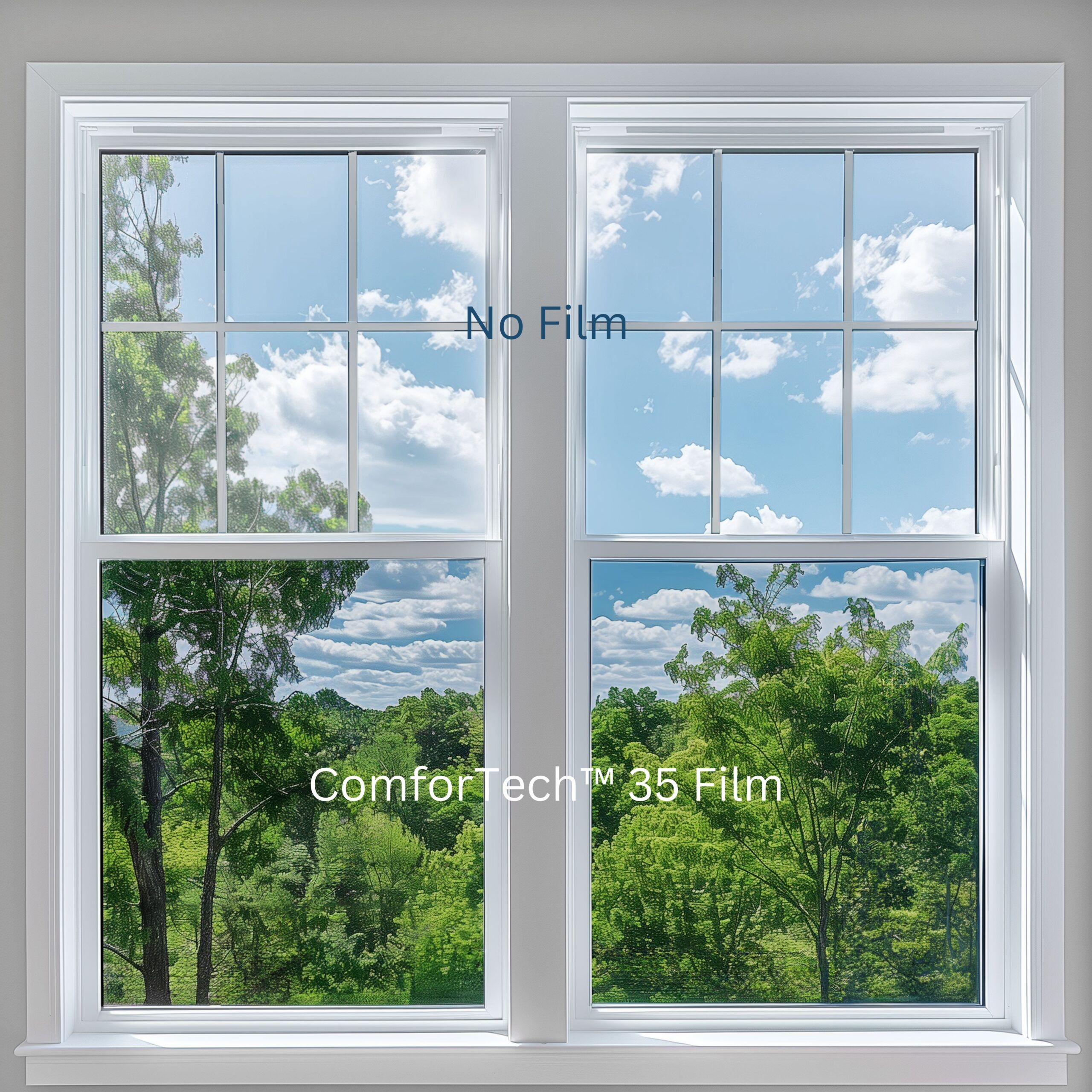Why Residential Window Tint is Perfect for Office and Research Studies
Why Residential Window Tint is Perfect for Office and Research Studies
Blog Article
Exactly How Residential Window Tinting Boosts Your Home's Power Effectiveness
Residential home window tinting presents a compelling option for house owners looking for to boost power efficiency within their living rooms. By applying specialized films to home windows, it efficiently lowers warm transfer, thereby maintaining interior temperatures and lessening the requirement for too much heating or air conditioning.
Understanding Home Window Tinting
Recognizing window tinting is vital for property owners looking for to boost both comfort and power performance in their space. Residential Window Tint. Home window tinting involves the application of a slim movie to the interior or exterior surface area of glass windows. This movie can considerably modulate the quantity of sunshine and heat that gets in a home, therefore affecting indoor climate conditions
There are different types of window tinting films available, each with distinct residential properties. The efficiency of window tinting is commonly gauged by its Visible Light Transmission (VLT) portion, which indicates how much light can pass through the movie.
Advantages of Energy Effectiveness
Window tinting not just boosts visual appeals yet likewise plays a significant duty in improving power effectiveness within household areas. By minimizing warmth transfer through home windows, colored films produce a more steady indoor climate, which can result in substantial reductions in power usage for home heating and air conditioning. This energy efficiency converts into lower utility costs, offering house owners with significant long-term savings.

Additionally, home window tinting enhances the comfort of living areas. By lessening glow and obstructing harmful UV rays, tinted home windows produce a more pleasant environment, which can cause boosted health for residents. The defense versus UV rays likewise helps protect furniture and flooring from fading, adding to the durability of house items.
Exactly How Tinting Works
Tinting films run with a combination of advanced materials and technologies created to control the quantity of solar power going into a home. Mostly made up of polyester, these movies typically incorporate metal or ceramic bits that soak up and mirror heat. This twin capacity permits them to substantially reduce the penetration of ultraviolet (UV) rays and infrared radiation while allowing visible light to travel through.
The effectiveness of home window tinting is gauged by its solar warmth gain coefficient (SHGC), which indicates exactly how much solar power is sent with the window. Lower SHGC worths are more effective as they signify higher warm rejection. Furthermore, home window colors can feature a variety of tones, allowing homeowners to customize their aesthetic choices while boosting energy performance.
Furthermore, these movies act as an obstacle, protecting against warm loss during cooler months by reflecting interior warmth back into the home. This thermal insulation result complements the air conditioning benefits obtained throughout warmer months, adding to a well balanced interior environment year-round. By managing solar power successfully, residential window tinting not only improves comfort but likewise plays a crucial role in reducing energy usage and reducing energy bills.
Picking the Right Tint

There are numerous kinds of home window films offered, including dyed, metalized, and ceramic. Ceramic films offer exceptional warmth control without compromising exposure and are very sturdy, making them a preferred choice.
Visible light transmission (VLT) is another crucial element, as it shows the quantity of natural light that can travel through the colored glass. Home owners should select a tint with a VLT that complements their lighting preferences while still supplying ample glow reduction.
Additionally, evaluating the solar warm gain coefficient (SHGC) can aid determine exactly how well a tint can obstruct warmth from sunlight. A reduced SHGC suggests better warmth control, inevitably improving power performance.
Setup and Upkeep Tips
Appropriate installment and upkeep are essential parts in taking full discover this info here advantage of the advantages of property window tinting. Professionals also utilize specialized devices and techniques, which can improve the resilience and efficiency of the color.
Following installation, maintenance is important to extend the life of the window movie. It is advised to wait at least 30 days before cleaning the tinted windows to enable the glue to cure completely.
Additionally, regular examinations are useful. Inspect for any type of peeling or bubbling, which might show improper installation or use with time - Residential Window Tint. Dealing with these problems without delay can prevent additional damage and preserve power efficiency. By adhering to these installation and maintenance ideas, home owners can ensure their window tinting proceeds to give substantial energy financial savings and convenience for years ahead.
Final Thought
In find out final thought, household home window tinting offers as an effective remedy for boosting energy efficiency within homes. By decreasing heat transfer and blocking damaging UV rays, home window movies contribute to lower power usage and boosted interior comfort.
Home window tinting includes the application of a thin film to the inside or exterior surface area of glass home windows. By reducing warmth transfer with home windows, tinted films create a more secure indoor environment, which can lead to considerable reductions in power intake for heating and cooling.The find more efficiency of home window tinting is gauged by its solar warm gain coefficient (SHGC), which shows just how much solar energy is transferred through the home window. By handling solar power effectively, domestic window tinting not only enhances convenience however also plays a crucial role in reducing energy consumption and decreasing energy expenses.
By decreasing warmth transfer and blocking dangerous UV rays, window films contribute to lower power usage and enhanced indoor comfort.
Report this page